The beginning of the Great Tohoku Earthquake. Start here to read events as they unfolded, all listed in reverse chronological order. To see the latest developments, click the link below.
**For the latest on the Great Tohoku Earthquake, click here.**
23.43 Simple map of areas affected by the blackout. Check your location and time (city list is below).
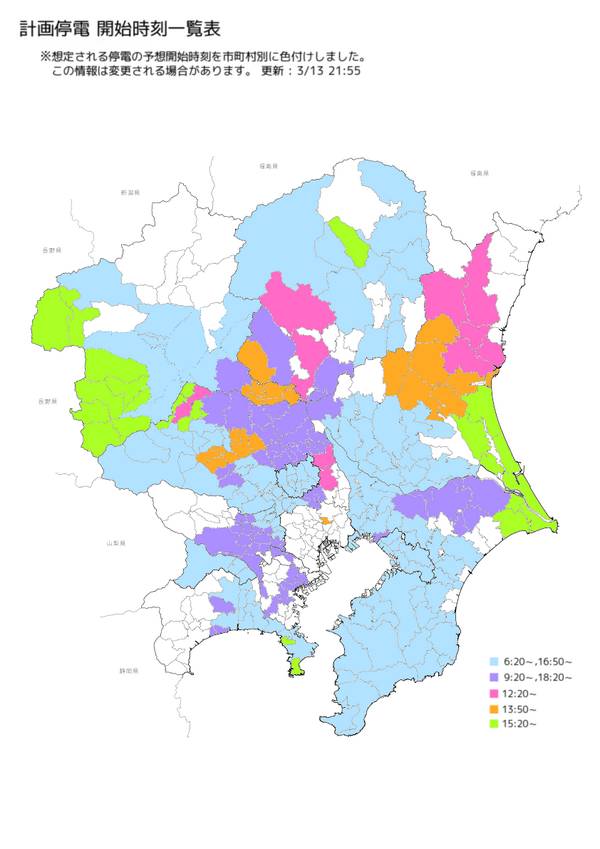
http://matome.naver.jp/odai/2130001740747617201
23.40 Reports state that the team at unit 3 in Fukushima have succeeded in opening the valve to reduce pressure in the nuclear reactor housing (via TBS)
22.17 English translation for the blackout listing – check your prefecture and city below (in Japanese)
Scheduled blackouts (Note: Groups 1 and 2 have two scheduled periods)
Group 1 Beginning sometime within: 6.20-10.00 (blackout itself will last 3 hours)
Group 2 Beginning sometime within: 9.20-13.00 (blackout itself will last 3 hours)
Group 3 Beginning sometime within: 12.20-16.00 (blackout itself will last 3 hours)
Group 4 Beginning sometime within: 13.50-17.30 (blackout itself will last 3 hours)
Group 5 Beginning sometime within: 15.20-19.00 (blackout itself will last 3 hours)
Group 1 Beginning sometime within: 16.50-20.30 (blackout itself will last 3 hours)
Group 2 Beginning sometime within: 18.20-22.00 (blackout itself will last 8 hours)
Check your group below – information mirrored from the Mainichi website. (Japanese)
or
Check your prefecture here
http://www.tepco.co.jp/images/tokyo.pdf
http://www.tepco.co.jp/images/kanagawa.pdf
http://www.tepco.co.jp/images/saitama.pdf
http://www.tepco.co.jp/images/chiba.pdf
http://www.tepco.co.jp/images/tochigi.pdf
http://www.tepco.co.jp/images/gunma.pdf
http://www.tepco.co.jp/images/ibaraki.pdf
http://www.tepco.co.jp/images/yamanashi.pdf
http://www.tepco.co.jp/images/numazu.pdf
<計画停電の予定地域>
第1グループ 6:20~10:00 の時間帯のうち3時間程度
第2グループ 9:20~13:00 の時間帯のうち3時間程度
第3グループ 12:20~16:00 の時間帯のうち3時間程度
第4グループ 13:50~17:30 の時間帯のうち3時間程度
第5グループ 15:20~19:00 の時間帯のうち3時間程度
第1グループ 16:50~20:30 の時間帯のうち3時間程度
第2グループ 18:20~22:00 の時間帯のうち8時間程度
※グループ毎の具体的な地域については、別紙の通りとなります。
※グループ毎の時間帯は、開始・終了時間が多少前後することがあります。
※なお、当日の需給状況によっては、予めお知らせした時間以外にも停電する場合がございます。
【その他】
・切れた電線には絶対にさわらないでください。
・火災防止のため、自宅を離れる際には、ドライヤーなどの電気機器のスイッチを入れたまま外出しないようお願いします。
・自家発をお持ちのお客さまにつきましては、燃料の確保等をお願いいたします。
く参考>
○3月13日の需給予測
需要想定 3700万kW(18時~19時)
供給力 3700万kW
○3月14日の需給予測
需要規定 4100万kW(18時~19持)
供給力 3100万kW
以上
以下、別紙の「想定される停電エリア」
****************************************************************************
◇第1グループ GROUP 1
****************************************************************************<平成23年3月14日(月) 6:20~10:00 16:50~20:30>
下記、市町村の一部のエリア
【栃木県】さくら市、宇都宮市、益子町、塩谷町、市貝町、真岡市、大田原市、那珂川町、那須鳥山市、那須町、日光市、芳賀町
【群馬県】みどり市、伊勢崎市、吉岡町、玉村町、桐生市?高崎市、高山村、渋川市、榛東村、前橋市、中之条町、東吾妻町、藤岡市
【茨城県】かすみがうら市、つくばみらい市、つぐば市、阿見町、稲敷市、下妻市、河内町、牛久市、境町、茎崎市、結城市、桜川市、取手市、守谷市、常総市、水海道市、筑西市、土浦市、八千代町、板東市、利根町、竜ケ崎市
【埼玉県】さいたま市、ときがわ町、ふじみ野市、横瀬町、皆野町、寄居町、狭山市、坂戸市、三芳町、志木市、所沢市、小鹿野町、小川町、新座市、川越市、秩父市、朝霞市、鶴ヶ島市、東大和市、東秩父村、入間市、飯能市、富士見市、嵐山町、和光市
【千葉県】野田市、流山市、柏市、白井市、松戸市、我孫子市、市川市、浦安市、千葉市、大網白里町、八街市、東金市、山武市、長南町、市原市、長柄町、睦沢町、茂原市、木更津市、白子町、袖ヶ浦市、君津市、富津市、鋸南町、南房総市、鴨川市、館山市、勝浦市、大多喜町、御宿町、いすみ市、船橋市、鎌ヶ谷市、八千代市、四街道市、佐倉市
【東京都】武蔵野市、三鷹市、西東京市、東久留米市、新座市、小平市、東村山市、清瀬市
【神奈川県】逗子市、横須賀市、鎌倉市、藤沢市、茅ヶ崎市、相模原市、座間市、海老名市、綾瀬市、平塚市、寒川町、厚木市
【静岡県】御殿場市、裾野市、小山町
※設備状況により、各グループで停電エリアが変更となることがありますので、ご了承ください。
****************************************************************************
◇第2グループ GROUP 2
****************************************************************************<平成23年3月14日(月) 9:20~13:.00 18:20~22:00>
下記、市町村の一部のエリア
【栃木県】佐野市、小山市、野木町
【群馬県】太田市
【茨城県】古河市
【埼玉県】川口市、さいたま市、蕨市、鳩ヶ谷市、戸田市、越谷市、吉川市、松伏町、三郷市、春日部市、宮代町、杉戸町、川越市、狭山市、鶴ヶ島市、日高市、飯能市、入間市、坂戸市、川島町、毛呂山町、越生町、ときがわ町、騎西町、幸手市、大利根町、白岡町、北本市、蓮田市、伊奈町、鴻巣市、桶川市、上尾市、加須市、久喜市、五霞町、行田市、熊谷市、羽生市、深谷市、所沢市
【千葉県】千葉市花見川区・美浜区・中央区・稲毛区・若葉区、習志野市、八千代市、印西市、我孫子市、白井市、栄町、成田市、神崎町、香取市、多古町、芝山町、佐倉市、市川市、松戸市、船橋市、野田市、流山市
【東京都】東村山市、清瀬市、東大和市、国分寺市、府中市、小金井市、八王子市、国立市、小平市、西東京市、武蔵野市、三鷹市、調布市、立川市、昭島市、武蔵村山市、多摩ニュータウン、町田市、狛江市、多摩市、日野市、稲城市
【神奈川県】横浜市鶴見区・港北区・南区・保土ヶ谷区・戸塚区・神奈川区・瀬谷区、厚木市、海老名市、座間市、伊勢原市、茅ヶ崎市、寒川町、二宮町、平塚市、大磯町、秦野市、中井町、大和市、相模原市、川崎市多摩区・高津区
【山梨県】笛吹市、市川三郷町、甲府市、中央市、鰍沢町、増穂町、韮崎市
【静岡県】熱海市、長泉町、清水町、沼津市、御殿場市、裾野市、三島市
※設備状況により、各グループで停電エリアが変更となることがありますので、ご了承ください。
****************************************************************************
◇第3グループ GROUP 3
****************************************************************************<平成23年3月14日(月)12:20~16:00>
下記、市町村の一部のエリア
【栃木県]宇都宮市、鹿沼市、小山市、栃木市
【群馬県】太田市
【茨城県】水戸市、ひたちなか市、常陸大宮市、常陸太田市、那珂市、土浦市、つくば市、かすみがうら市、牛久市、竜ヶ崎市、稲敷市
【埼玉県】さいたま市、春日部市、朝霞市、和光市、志木市、新座市、富士見市、越谷市、川口市、戸田市、蕨市、幸手市、蓮田市、上尾市、桶川市、深谷市、本庄市、伊勢崎市、熊谷市、行田市
【千葉県】成田市、富里市、佐倉市、八街市
【東京都】八王子市、日野市、東村山市、清瀬市
※設備状況により、各グループで停電エリアが変更となることがありますので、ご了承ください。
****************************************************************************
◇第4グループ GROUP 4
****************************************************************************
<平成23年3月14日(月)13:50~17:30>下記、市町村の一部のエリア
【栃木県】栃木市、佐野市、足利市、館林市、板倉町、明和町
【群馬県】館林市、邑楽町、千代田町、伊勢崎市、桐生市、みどり市、太田市、大泉町
【茨城県】水戸市、那珂市、ひたちなか市、大洗町、城里町、笠間市、桜川市、石岡市、茨城町、小美玉町
【埼玉県】本庄市、熊谷市、長瀞町、皆野町、秩父市、嵐山町、横瀬町、寄居町、深谷市、神川町、小川町、鳩山町、東秩父村、ときがわ町、毛呂山町、越生町、飯能市、入間市、坂戸市、日高市、東松山市、滑川町、吉見町、川越市、鶴ヶ島市、川島町、狭山市、桶川市、富士見市、さいたま市、新座市、朝霞市、和光市、ふじみ野市’.戸田市、蕨市、川口市、上尾市、久喜市、北本市、加須市、鴻巣市、蓮田市、伊奈町、白岡町、幸手市、宮代町、春日部市、杉戸町、松伏町
【千葉県】習志野市、船橋市、千葉市
【東京都】荒川区、立川市、昭島市、国立布、日野市
【神奈川県】川崎市、横浜市
【山梨県】甲府市、甲斐市、中央市、笛吹市、市川三郷町、昭和町、南アルプス市、山梨市、甲州市
※設備状況により、各グループで停電エリアが変更となることがありますので、ご了承ください。
****************************************************************************
◇第5グループ GROUP 5
****************************************************************************<平成23年3月14日(月) 15:20~19:00>
下記、市町村の一部のエリア
【栃木県】宇都宮市、矢板市、さくら市、芳賀町、市貝町、真岡市、益子町
【群馬県】前橋市、高崎市、安中市、富岡市、藤岡市、神流町、神川町、下仁田町、南牧村、臼田町、草津町、中之条町、嬬恋村、長野原町、美九里、玉村町、甘楽町、上野村
【茨減県】石岡市、小見玉市、茨城町、鉾田市、行方市、潮来市、神栖市、鹿嶋市、かすみがうら市、土浦市、稲敷市、牛堀町、佐原市、香取市、波崎町
【埼玉県】川口市、越谷市、三郷市、草加市、八潮市、熊谷市、行田市、鴻巣市、本庄市、上里町、深谷市、美里町、神川町
【千葉県】流山市、野田市、柏市、我孫子市、鎌ヶ谷市、白井市、松戸市、香取市、神埼町、多古町、東庄町、銚子市、旭市
【東京都】町田市
【神奈川県】横浜市、川崎市、相模原市、鎌倉市、横須賀市、三浦市、葉山町、逗子市、大和市
【山梨県】甲州市、山梨市、笛吹市、大月市、都留市、西桂町、富士吉田市、富士河口湖町、鳴沢村、忍野村、山中湖村
【静岡県】富士宮市、富士市、沼津市、函南町、三島市、伊豆の国市、熱海市、伊豆市、伊東市、東伊豆町、西伊豆町、南伊豆町、松崎町、河津街、下田市
22.06 Legible blackout schedule up at Mainichi:
http://mainichi.jp/select/weathernews/news/20110313mog00m040012000c.html
21.25 Map showing the two major power networks in Japan. Energy conservation is absolutely necessary for those living on the 50kHz network grid in the East of Japan. Of course, saving energy is important, so those on the Western 60kHz are still encouraged to cut back during these difficult days. (via @Mutantfrog)
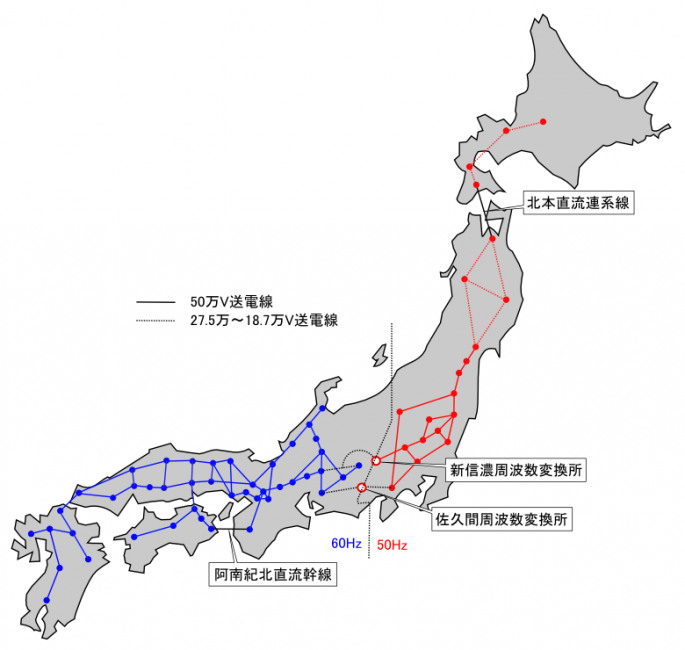
http://www.mutantfrog.com/2011/03/13/a-note-on-energy-conservation/
21.20 Mirror of the schedule of power outages in Japan – download here.
21.03 Tentative schedule of power outage locations and times:
http://mainichi.jp/select/weathernews/20110311/etc/teiden20110313.pdf
20.30 Prime Minister Kan calls the earthquake the greatest crisis in Japan in 65 years since WWII. He is calling for all people to conserve power in Japan by turning off appliances and unplugging devices from the power outlets. Nuclear power stations in two locations in Tohoku and Kanto as well as thermal power stations in 5 locations have stopped functioning. This has led to a 10 million kw shortage (equaling the annual electric usage for 2500 homes – via @Goldie_luvmj), meaning that it is necessary to utilise controlled blackouts to minimise the power consumption and disruption. The blackouts are scheduled to begin from tomorrow.
http://www3.nhk.or.jp/news/html/20110313/k10014649421000.html
20.20 The water gauge at unit 3 in Fukushima is not rising as water is pumped in to cool the system. There is concern that the water is not being adequately applied and the task force is looking in to the matter.
http://www3.nhk.or.jp/news/html/20110313/k10014649381000.html
19.20 Remember, even thought the tsunami warnings have been cancelled, there is still a 70% chance of a level 7 earthquake occurring in Japan within the next 3 days. Be prepared.
Here’s the source from before:
http://www3.nhk.or.jp/news/html/20110313/k10014641851000.html
19.03 Front page of the Sunday Independent newspaper in the U.K:

Via: http://twitpic.com/491e7k
18.47 Amazing footage of the earth cracking in Japan.
http://www.youtube.com/watch?feature=player_embedded&v=-LPGzzaSsbU
18.18 All tsunami warnings have now been cancelled:
http://www.jma.go.jp/en/tsunami/
17.53 Before and After pictures of the earthquake and tsunami damage:
http://www.abc.net.au/news/events/japan-quake-2011/beforeafter.htm
17.43 English Press Releases from the Nuclear and Industrial and Safety Agency (NISA) (via @durf)
http://www.nisa.meti.go.jp/english/index.html
17.11 Intentional venting of the air was carried out for Unit 3 of Fukushima Plant I as well to lower the pressure inside the containment vessel (via @norishikata)
Noriyuki Shikata is the “Deputy Cabinet Secretary for Public Relations, Director of Global Communications at Prime Minister’s Office of Japan. Worked for Ministry of Foreign Affairs. http://www.kantei.go.jp/foreign/index-e.html”
16.59 Edano, Chief Cabinet Secretary, has instructed that information channels should be set up in various languages to ensure residents who cannot understand Japanese receive correct information. (via @NHK t.v)
16.48 920,000 homes are still without power in the Tohoku and Kanto areas. (via @NHK t.v)
16.39 Reactors at unit 3 in Fukushima currently being cooled with seawater to prevent explosion or further radiation leaks. Once filled with corrosive seawater it will difficult to ever use the reactors again.
http://www.asahi.com/special/10005/TKY201103130132.html
16.25 Satellite image showing the damage from above. The water come in about 2km from the shore.

http://www.flickr.com/photos/digitalglobe-imagery/5521190819/in/set-72157626248178510/
16.14 Eyewitness account by @jamesinjapan on the quake.
That night, however, was terrifying – not because of any particular event, but as a result of our fear. Aftershocks hit time after time, little shakes and big bumps, each time forcing us to question whether it was time to flee the building.
We started the night with just a single emergency rucksack on standby at the entrance, but through the early morning we had assembled two further bags with clothes and blankets – basic essentials that might make a disaster more comfortable. By 06:30, unable to withstand the constant stress of the earthquake alert system, I drifted off.
http://newpacificinstitute.org/jsw/?p=5291
16.12 Stunning pictures of the aftermath:
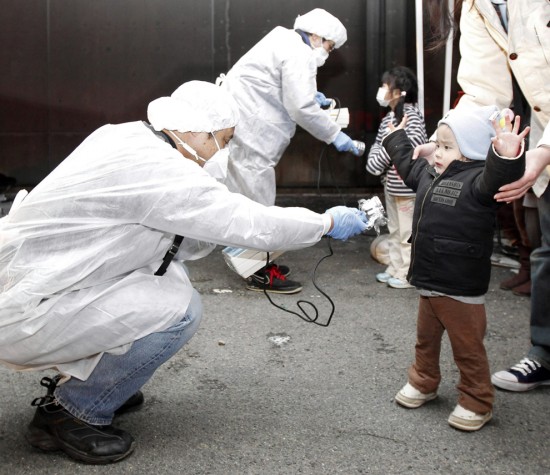
http://www.boston.com/bigpicture/2011/03/japan_earthquake_aftermath.html
16.00 Explanation of the state of the units in Fukushima plant 1.
Below, units 4-6 are under examination.
The orange section at the bottom shows the outer storage building for the reactor. High pressure is building up inside it at units 2 and 3. At unit 1, it has been filled with sea water to prevent further damage or radiation leaks.
The blue section shows the cooling situation. unit 3 is currently being cooled with water, unit 2 is still unstable.
The green section shows the power outage. None of the reactors are functioning.
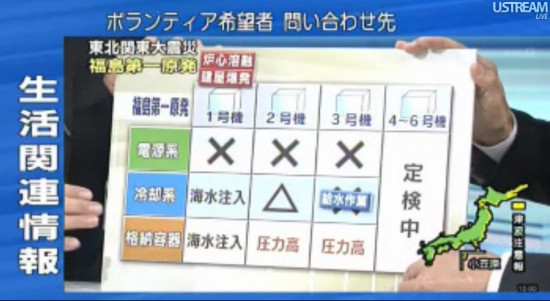
15.40 Unit 3 at Fukushima plant 1 is in trouble. Topping up the water in the cooling system is failing and a hydrogen explosion may be imminent. Government says that it will not affects the nuclear reactor or core. Currently radiation levels there are at 184.1 micro sieverts/hour. (via NHK t.v)

http://www3.nhk.or.jp/news/html/20110313/k10014643561000.html
15.36 Google earth map of the distance between Fukushima nuclear power plant and Onagawa (via @mutantfroginc @watermelondave)
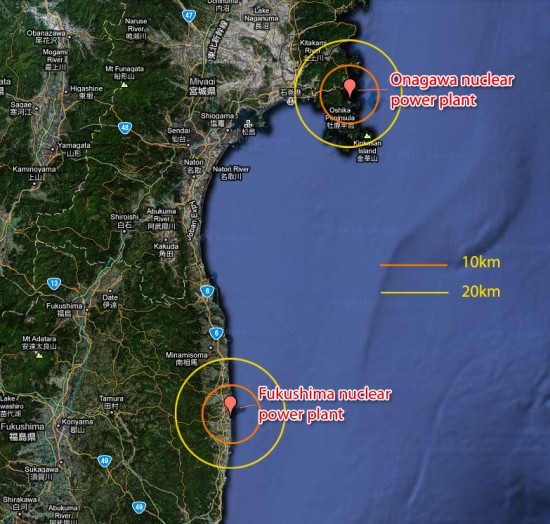
15.12 Situation at Onagawa nuclear power plant – 21 micro sieverts detected/hour by the Monitoring Post set up. This is higher than normal (anything over 10 micro sieverts/hour requires evacuation). However, this radiation is said to not be from the Onagawa plant, but more likely from Fukushima. The Onagawa plant is shut down and currently safe.
14.58 Satellite pictures of the damage done by the earthquake and tsunami.
Google Earth imagery of the earthquake
14.53 Latest explanation of the Fukushima situation (via NHK t.v)
Below: Water levels at unit 3 in Fukushima have been restored using pumps from fire engines. Currently at over 2m and stable.
14.44 Mirrored the report on who can and can’t give blood in Japan (from Mutantfrog)
Who can and can not donate blood in Japan
March 13th, 2011 by Roy Berman
[Correction: Accidentally typed Australia at first below, should have been Austria all along.]
There has been a lot of confusion over who exactly is allowed to donate blood according to Japanese regulations, especially foreigners. To try and clarify the situation I have translated the entire list of categories of persons who are NOT allowed to donate blood in Japan, from the Japanese Red Cross official web page.
The biggest confusion is regulations relating to foreigners, especially because of mad cow disease aka spongiform encephalitis (Creutzfeldt–Jakob disease).
The following categories of people are BANNED from donating blood in Japan.
Please do not clog blood donations centers if there is even a chance you fall into one of the following categories, and instead find some other way to help.
Please also note first of all that ANYBODY who has entered Japan in the last four weeks may NOT give blood.
First, the rules relating to BSE/Mad Cow Disease
To clarify the below rules, please calculate your TOTAL amount of time spent in ANY of the countries in categories 1~4 during the relevant risk period for that country. If your total period of time in a high-risk country during a high-risk period is equal to 6 months or more than you are banned from blood donations for life.
Similarly, if you have spent a total of 5 years total in any of the countries listed in all 6 categories during risk periods, then you are banned from blood donations for life in Japan unless a new medical test in the future causes the regulations to change.
Please note that no countries in North or South America are on this list; despite the worries over Canadian/US beef it was never transmitted to humans.
Anybody who has spent a TOTAL of 30+ days in the UK between the years 1980 and 1996.Anybody who has spent a TOTAL of 6+months in the UK between 1997 and 2004. (Note: Also include period of stay under category 1,3,4 in this total.)
Anybody who has spent a TOTAL of 6+ months in Ireland, Italy, Holland, Saudi Arabia, Spain, Germany, France, Belgium, Portugal, between the years of 1980 and 2004. (Note: Also include period of stay under category 1,2,4 in this total.)
Anybody who has spent a TOTAL of 6+ months in Switzerland between the years of 1980 and 2004. (Note: Also include period of stay under category 1,2,4 in this total.)
Anybody who has spent a TOTAL of 5+ years in Australia, Austria, Greece, Sweden, Denmark, Finland, Luxembourg, between the years 1980 and 2004. (Note: Also include period of stay under category 1,2,3,4,6 in this total.)
Anybody who has spent a TOTAL of 5+ years in Iceland, Albania, Andorra, Croatia, San Marino, Slovakia, Slovenia, Serbia, Czech Republic, Vatican City, Hungary, Bulgaria, Poland, Bosnia, Herzegovina, Macedonia, Malta, Monaco, Montenegro, Norway, Lichtenstein, Romania, between the years of 1980 through the present day. (Note: Also include period of stay under category 1,2,3,4,5 in this total.)
Next the rules relating to blood parasite diseases.
Anybody who has entered the country in the past four weeks.Anybody who has entered Japan after visitinga malaria high-risk area within the last year. This is true even if you were only at a resort area of the country. HOWEVER, if you have been specifically tested for malaria and been found negative you may donate blood.
Anybody who has entered Japan after living in a malaria high-risk area within the last three years.
Anybody who has ever lived in a region known for Chagas Disease, AKA American trypanosomiasis. (This is a blood parasite like malaria.)
Anybody recently returned from Africa or who has lived in Africa and ever tested positive for African trypanosomiasis (African sleeping sickness.)
Anybody who has ever tested positive for babesiosis, another blood parasite most commonly found in tropical regions such as Africa or Latin America.
Also anybody who has engaged in medical work, research, field work, etc. in any regions known for similar diseases should not donate blood.
Last are other categories of persons who may not donate blood.
Anyone who has or has had heart disease, or malignant tumor,Anyone who has rheumatic fever or is on antibiotics due to risk of rheumatic fever
Sufferers from any convulsive disorder
Sufferers from blood-loss related diseases such as hemophilia or purpora.
Asthmatics
Stroke victims
Anyone with medicine allergies, nephritic syndrome, chronic inflammation disorders.
Anyone currently experiencing extreme hunger or sleep deprivation.
Anyone currently taking prescription drugs, except for those such at vitamins with no harmful side effects.
Pregnant women or breast-feeding mothers.
Anybody with a fever, specifically temperature of 37℃ or higher
HIV, hepatitis infected persons (free AIDS testing centers link)
Anyone who has ingested marijuana or other psychoactives within the last year
Any man who has engaged in homosexual behavior
Anyone with a history of sex with anonymous partners
Anyone who has been treated for hepatitis A within the past 6 months. Also, since it is often transmitted by shellfish, anybody whose family member has been treated for hepatitis A within the past 1 month. Hepatitis B and C stay in your system, so you are permanently banned.
Anybody who has ever RECEIVED a blood transfusion. (Due to the possibility of viruses as yet unknown to medical science.
Anybody who has gotten a body piercing (ears included) within the past year.
Anybody with a piercing on a mucous membrane such as the lip, tongue, nose, no matter when you got it.
Anybody who has gotten a tattoo within the past year.
Anyone who has been vaccinated using an inactive vaccine within the past 24 hours for diseases such as influenza, Japanese encephalitis, cholera, hepatitis A, pneumonia, whooping cough (pertussis), tetanus (may not be a complete list)
Anyone who was given anti-HBs human immunoglobulin in combination with a hepatitis B vaccine, anyone who was given an emergency rabies vaccine (that is, after being bitten) within the past 1 year.
Anyone given a vaccination for mumps, rubella/German measles, Bacille Calmette-Guerin (tuberculosis vaccine), or other mildly active vaccine (live attenuated) vaccine or any hepatitis B vaccine within the past 4 weeks.
Anyone vaccinated against smallpox within the past 2 months.
Anyone given an antisterum for tetanus, snake bite or other poison, gas gangrene, botulism etc. within the past 3 months.
Anyone who has had dental surgery that caused bleeding within the past 3 days.
14.21 Unit 3 at Fukushima plant 1 is recovering after water levels cooling the reactor were topped up.
http://www3.nhk.or.jp/news/html/20110313/t10014641801000.html
14.10 How the World is reporting on the Japan quake:
http://www.newseum.org/todaysfrontpages/default.asp?tfp_show_sort=yes
14.04 The latest on the state at Fukushima. Unit 1 has been filled with sea water and is under control. Units 2 and 3 have experienced problems and radioactive vapour has been released into the atmosphere to reduce pressure, as was done with the reactor in the first unit.
On Sunday, they announced that the cooling system at a second reactor in the same aging plant had failed, forcing officials to release radioactive vapor into the atmosphere. At least 210,000 people were told to evacuate the areas.
The cooling systems at three other reactors at a second nuclear plant had also failed, officials said. While cooling might still be revived, if it could not, these reactors could also require emergency cooling, they said.
For now, the most pressing concern stemmed from a radiation leak and explosion at the No. 1 reactor of the Fukushima Daiichi Nuclear Power Station on Saturday. Officials were forced to flood the overheating reactor with seawater to avoid a nuclear meltdown.
By Sunday officials were forced to take steps at another reactor — No. 3 — to avert a nuclear meltdown after a critical failure of their cooling systems briefly exposed fuel rods — a dangerous state that could lead to meltdown.
On Sunday morning, officials injected water and boric acid into the second reactor and released radioactive vapor to ease pressure, said Yukio Edano, the chief cabinet secretary. The reactor’s fuel rods had become exposed, he said, which called for the extraordinary measures.
http://www.nytimes.com/2011/03/13/world/asia/13nuclear.html
13.52 The Japanese government rates the accident at the Fukushima Number One nuclear power plant at level 4 on an international scale of 0 to 7. (via @mutantfroginc)
13.50 Instructions are being giving for people living within the 20km radius around Fukushima to be evacuated, totally 210,000 people. (via NHK t.v)
13.48 Japan Newbie has published a list of useful Japanese vocabulary related to the earthquake:
http://www.japannewbie.com/2011/03/13/japanese-news-earthquake-vocabulary/
13.46 Latest figures: over 1600 people dead (via NHK t.v).
13.41 Latest figures on TBS: Over 2700 dead or missing.
13.38 Mutantfrog has published an article detailing who can NOT give blood in Japan Useful reading.
http://www.mutantfrog.com/2011/03/13/who-can-and-can-not-donate-blood-in-japan/
Japanese page here: http://www.jrc.or.jp/donation/refrain/index.html
13.30 150 SDF troops along with water tanks and pumps have been sent to reactor 2 at Fukushima nuclear power plant ready to start work releasing the radioactive steam and cooling the reactor core (it has not yet been decided when). Problems have been reported at the second reactor since this morning. Due to the loss of the first reactor yesterday and the continuing problems, controlled blackouts are being predicted in order to deal with the lack of power. (via TBS tv)
13.00 After careful analysis, the Japan Meteological Agency has upgraded the Tohoku earth to a Moment Magnitude (Mw) of 9.0. The effects were felt 500km North-South and 200km East-West and the quake lasted around 5 minutes. There still remains a 70% risk of the highest magnitude 7 (on the Japanese scale) aftershock for up to 3 days within the 500x200km area, so people are being advised to take care.
http://www3.nhk.or.jp/news/html/20110313/t10014640551000.html
12.50 Live Updates Resume
**End live Updates** Thanks for sticking with me again everyone. Really gotta catch up on some proper sleep now. Keep following the live updates on Twitter with other people in Japan and be vigilant – earthquakes and tsunamis are still occurring and likely to do so for some time yet. Good night! We’ll see what tomorrow brings after a good rest.
02.41 Tohoku Earthquake upgraded to ‘Severe Disaster’ status by Japanese government.
http://www3.nhk.or.jp/news/html/20110313/k10014635281000.html
02.22 How Japan’s Earthquake and Tsunami Warning Systems work:
http://www.technologyreview.com/blog/editors/26505/?p1=A5
02.20 Amazing citizen-shot video of floating houses in Japan (you need to create NicoNicoDouga account) (via @shioyama)
http://www.nicovideo.jp/watch/sm13844646
02.00 Press conference about the nuclear reactor cooling process. Japan’s Self Defence Force (SDF) have been cooling the reactor of plant no. 1 in Fukushima by filling the container with sea water. Boric acid was also added to the mix to absorb the neutrons and prevent the nuclear fuel from re-activating.
http://www3.nhk.or.jp/news/html/20110313/t10014635191000.html
Wikipedia article about the Sievert for measuring radiation (via @mutantfroginc)
01.53 Link to site with 3 live streaming japanese news channels about the ongoing earthquakes (via @mutantfroginc)
http://www.ustwrap.info/multi/7475111::japanhelpchannel::tbstv
00.50 Tokyo Supermarket empty as people stock up on food (via @tokyocooney)
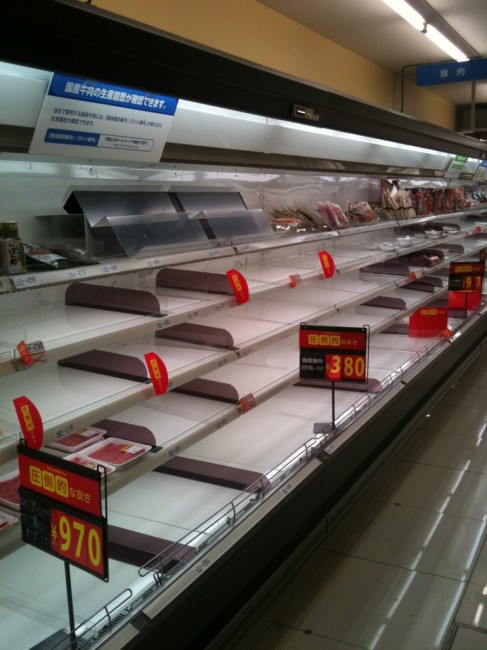
00.26 Seismic activity using Trend Compass (via @shibuya246) Circle size shows magnitude, colour shows depth:
Note: The graph plotted ends *before* the current earthquake events began (thanks to @daniel_garcia_r for pointing that out).
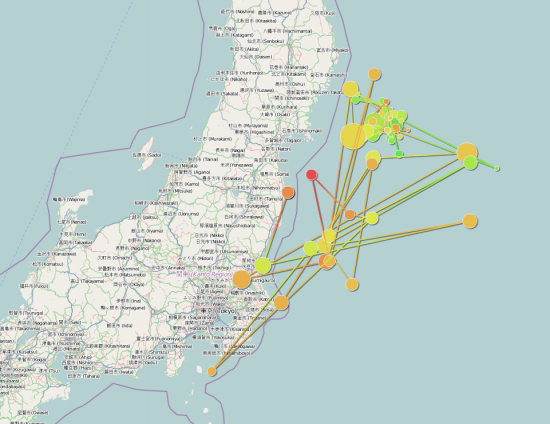
http://www.epicsyst.com/test/v2/japan-earthquake/
00.21 Explanation from an alleged Nuclear Reactor Operator from Reed College about nuclear reactor cooling systems.
In response to the question How serious is the threat to the Fukushima nuclear plant? on Reddit.
Disclaimer: IAaNRO (I Am a Nuclear Reactor Operator. I work part-time at my college’s research reactor)
Short Answer: It’s unlikely. It’s been shutdown, but the core is still producing heat. It’s not impossible for it to meltdown, but the main concern right now is that the steam pressure is rising in the cooling system, to the point where the system might rupture if nothing is done.
(Note: Originally I thought it was impossible for this reactor to meltdown at this point, but I’ve since been corrected. I’ve edited my answer slightly to reflect this)
Long answer:
Nuclear power reactors are of two main varieties: Pressurized Water Reactors, and Boiling Water Reactors. The plant in question is a Boiling Water Reactor (BWR). BWRs work by using the core’s thermal energy to boil the cooling water into steam, and then channelling the steam in order to turn a steam turbine. After it exits the turbine, the steam is cooled in a condenser, where it turns back to water, and then is sent back into the core. The condenser requires cool water to be actively pumped through it, to keep the pipes upon which the steam condenses from becoming too hot. The water/steam that runs through the core and the turbine is referred to as the “primary cooling system”, and the water running through the condenser is the “secondary cooling system.” The primary is assumed to be contaminated (that is, it is measurably radioactive), whereas the secondary system is not, since it is isolated from the primary.
As far as I can tell, the chain of events for this particular plant went something like this:
Shortly after the quake, the reactor successfully shut down in anticipation of the tsunami. This means that no more fission is occurring in the core. A meltdown a la Chernobyl is a result of uncontrollable fission. This will not be another Chernobyl. However, just because U-235 is no longer fissioning, doesn’t mean that the core isn’t producing heat. The fission fragments (those isotopes produced as a result of the U-235 fissioning) will continue to decay through alpha, beta, or gamma emission, until stable elements at the bottom of the decay chain are reached. The decay of these fission fragments and their decay products will cause the core to continue to produce heat for some time after shutdown.
Presumably due to the fact that every reactor near the east coast of Japan was being shutdown, offsite power for the secondary cooling system was unavailable, so the power plant had to rely on onsite backup power, but the onsite power only lasted for 8 hours. After that, the secondary cooling system failed, which is what triggered the declaration of the Nuclear Emergency, and evacuation of those living within 3Km of the plant.
Since the core is continuing to produce heat, and consequently steam, the steam pressure inside the primary system is rising above normal levels. They are hesitant to bleed off steam into the containment dome, since the dome was probably damaged in the quake, but obviously bleeding off some steam is better than having the primary system rupture. Thankfully, most of the really nasty decay products have a relatively short half-life. In particular, Nitrogen-16, which gives off pretty high energy betas when it decays, has a half-life of 7.2 seconds. Therefore, releasing the steam is undesirable, but not catastrophic, and probably not even particularly hazardous. The radioactive materials in the cloud will be longer-lived decay products of hydrogen and oxygen in, and as far as I’m aware none of those are particularly active. The cloud will be dilute itself after release, which will lower the intensity of the radiation field significantly. Therefore, the total radioactivity release will be many orders of magnitude lower than that of Chernobyl or Three Mile Island.
tl;dr: Right now, the fear isn’t meltdown, it’s mainly the steam pressure. The media are definitely playing up the meltdown angle, though.
Like I said, I’m a nuclear reactor operator–if you still have questions, please ask me.
Via: http://www.reddit.com/r/askscience/comments/g29ay/how_serious_is_the_threat_to_the_fukushima/c1ke4zi
March 13th, 2001
**For the latest on the Great Tohoku Earthquake, click here.**
23.47 Japan Sub-culture updates with a page explaining how you can help the disaster efforts.
http://www.japansubculture.com/2011/03/tohoku-disaster-how-to-help/
23.44 Another level 5 quake recorded in Niigata
23.39 National Police Agency confirm 5000 homes submerged in Rikuzen Takata city, Iwate prefecture. In Sendai, Wakabayashi-ku and Arahamachi-ku 2700 homes have been completely washed away and 200-300 bodies have been found on the shore.
http://www3.nhk.or.jp/news/html/20110312/k10014634181000.html
23.29 Map showing the radius around Fukushima. Currently only a 20km risk area has been identified.
Via: http://globalvoicesonline.org/2011/03/12/japan-fear-in-fukushima/
23.22 Softbank allows free SMS messages within Japan for a week form the quake.
http://mb.softbank.jp/scripts/japanese/information/kinkyu/detail.jsp?oid=537231423
23.19 Heading in the wrong direction (via @shioyama)

23.11 NHK reports that cooling the Fukushima reactor with seawater should be done by about 1am.
http://www3.nhk.or.jp/news/html/20110312/k10014633801000.html
22.50 3 civilians awaiting rescue in Fukushima prefecture diagnosed with radiation sickness.
http://www3.nhk.or.jp/news/html/20110312/k10014633691000.html
22.45 Mutantfrog has translated the TEPCO Fukushima nuclear plant profiles into English:
http://www.mutantfrog.com/2011/03/12/vital-stats-of-the-fukushima-nuclear-plants/
22.22 Terrifying footage from inside Sendai area at the time of the initial tsunami:
http://www.youtube.com/watch?v=p_6iDBoOvb0
22.19 A low level 5 quake recorded in Fukushima prefecture, Hamadori. Tsunami warnings issued. This is the first level 5 quake since the level 6 one at 5.46 this morning.
http://typhoon.yahoo.co.jp/weather/jp/earthquake/2011-03-12-22-15.html
http://typhoon.yahoo.co.jp/weather/jp/earthquake/2011-03-12-05-42.html
22.10 10,000 people missing in tsunami-hit town of Minami-Sanriku, Miyagi prefecture (population: 17,800) (via @pinktentacle, NHK)
22.01 Outline of TEPCO nuclear reactors 1-6:
http://www.tepco.co.jp/nu/f1-np/intro/outline/outline-j.html
21.57 Fukushima evacuation areas for reactors 1 and 2:
21.46 Current death toll at over 1000 people.
20.45 Edano, Chief Cabinet Secretary, briefs the public on the situation at the Fukushima nuclear power plant, reactor 1. Beginning 14.00, valves were opened to begin releasing pressure building up in the nuclear reactor. Before this, radiation amounts were increasing. At 15.36 an explosion occurred as a result of the levels of water used for cooling the reactor decreasing. This gave rises to large amounts of radioactive steam, increasing pressure. This steam had a chemical reaction with the metal-coated pipes covering the nuclear rods, producing hydrogen. The hydrogen eventually combined with oxygen to cause the explosion, damaging the surrounding concrete and steel structure. The container and nuclear core reactor itself have not been damaged, so there will be no large radiation leaks. According to Edano, the density of radiation did not increase after the explosion. At 15.29, 1015μSv/h of radiation was detected (*edit* according to other sources this is equivalent to an annual dose for a human being). The explosion then took place at 15.36. At 15.40, 860μSv/h of radiation was detected, and at 18.58, 70.5μSv/h, showing that the level of radiation was decreasing. Currently, the radiation leakage to outside has not changed much. In order to prevent any further damage or leakage Tokyo Electric Power Company (TEPCO) are to fill the reactor with seawater (something rather unprecedented) to ensure it does not reach a critical state again. These measures have been put into place as of 20.20. Residents within the 10-20km radius are not in immediate danger, but the government wanted to err on the side of caution and extend the radius in case of any further complications. Asks all citizens to react calmly and beware of false information.
http://www.nicovideo.jp/watch/sm13847226
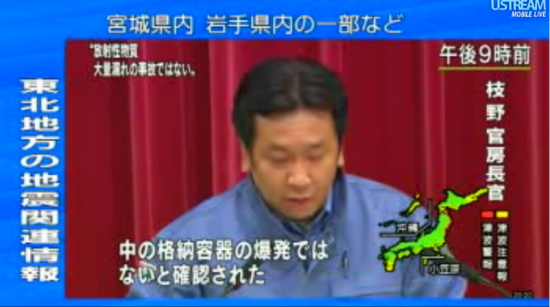
20.35 Kan, Prime Minister of Japan, speaking live on television. Government making full efforts to rescue missing persons and take care of people in evacuation areas. Regarding 1st and 2nd nuclear power plant in Fukushima, the first priority is the safety of people. New development has resulted in extending the evacuation order extended to 20km radius.
Images of before and after the explosion:
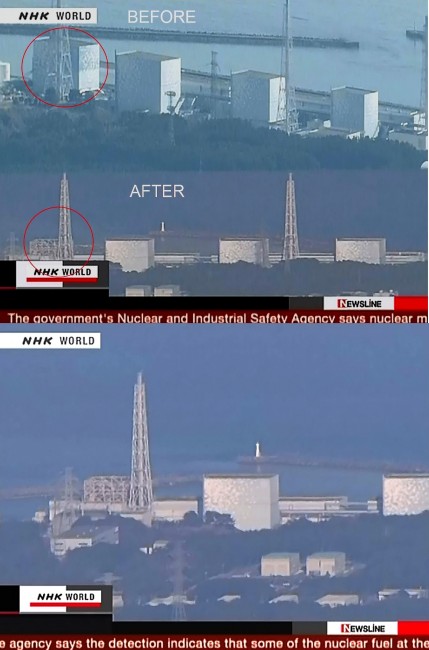
Explosion at 3.36pm, Fukushima nuclear power plant:
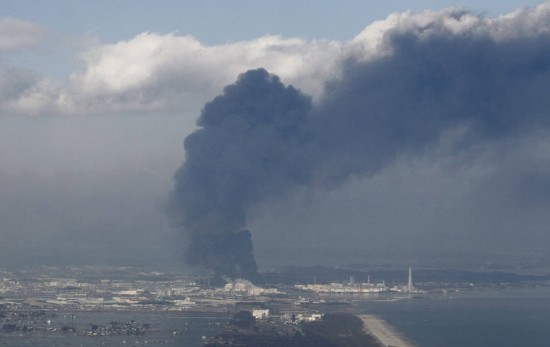
Fukushima nuclear power plant:
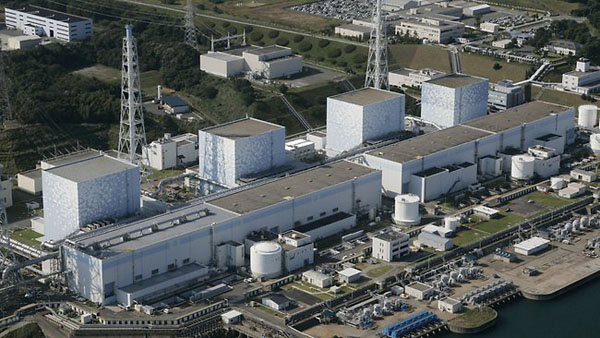
**Live Updates Resume as of 20.32**
Gotta leave you for now all. Thanks for the support!
05.49 Another level 6 in Nagano.
05.45 Latest figures: 184 dead, 708 missing, 947 injured.
05.37 I was just interviewed on CNN about the earthquakes here in Japan. – Sorry I missed an hour of updates!
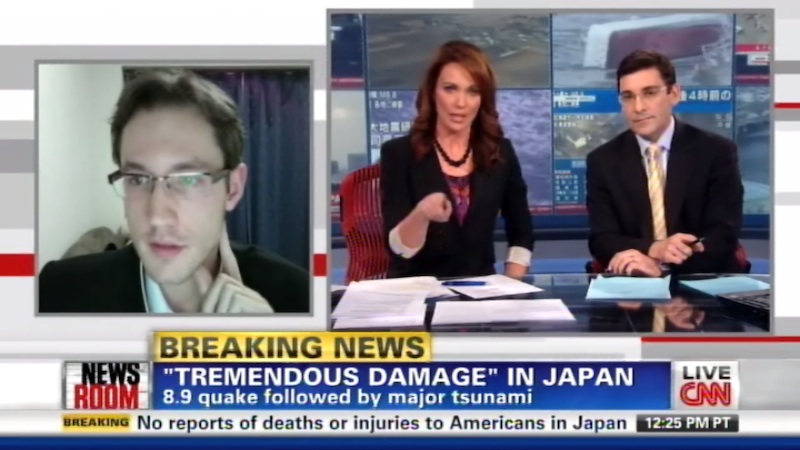
Short interview about 2 hours 51 minutes in towards the end of this recording: http://www.ustream.tv/recorded/13251729
04.34 Another level 6 quake measured in Nagano.
04.26 Quakes still continuing every few minutes:
http://typhoon.yahoo.co.jp/weather/jp/earthquake/
04.04 Another big quake scale 6 recorded in Nagano, Niigata and other areas. I felt a slight tremor here near Nagoya.
http://typhoon.yahoo.co.jp/weather/jp/earthquake/2011-03-12-03-59.html
04.01 Great Tohoku Earthquake ranks 5th biggest in the world since 1990.
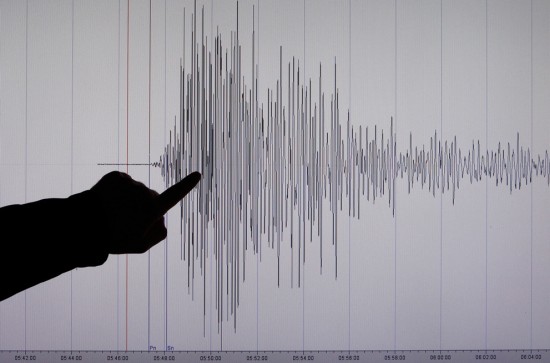
03.48 Latest figures from the National Police Agency: 167 dead, 515 missing, 827 injured.
03.45 2 workers reported missing from the 1st Fukushima nuclear plant. 1 reported dead from the 2nd plant.
http://www.bloomberg.co.jp/apps/news?pid=90920017&sid=aWM3e_pe2dJg
03.37 Diagram showing how the vapour would be released from the reactor.
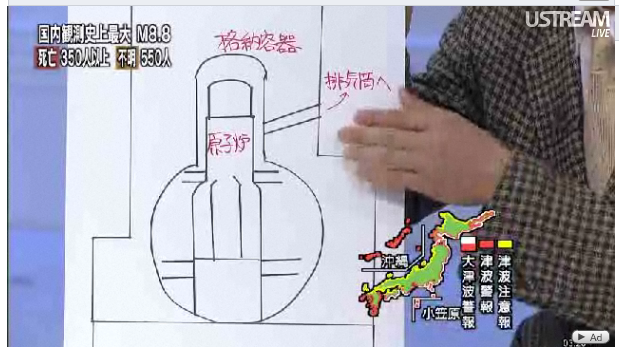
03.27 Has been decided that it is necessary to release the pressure in the nuclear reactor. A small amount of radioactive vapour may be given off, but it should not cause a threat as people have been evacuated from around the immediate area. (via NHK)
03.20 Radiation leak could occur at Fukushima nuclear plant: Minster for Economy, Trade and Industry Banri Kaieda. Any leak though, would be small (Kyodo) (via @japantimes)
03.16 Another aftershock recorded on a scale of 3. Looks like they are continuing after all, so take care everyone. #signingout
http://typhoon.yahoo.co.jp/weather/jp/earthquake/
03.14 Emergency warning for incoming earthquake in China and Ibaraki. Take care all.
**End live updates** I’m signing out. It’s been 10 hours since I started blogging and I’m shattered. Keep following the news on Twitter and the various news sites. My thoughts are with the people in Northern Japan. I pray the worst is over. Peace.
03.00 Tsunami warnings still being issued. Stay away from the coasts until clear. Be vigilant and prepare for aftershocks for days to come!
02.59 New Scientist article about Japan’s largest ever earthquake.
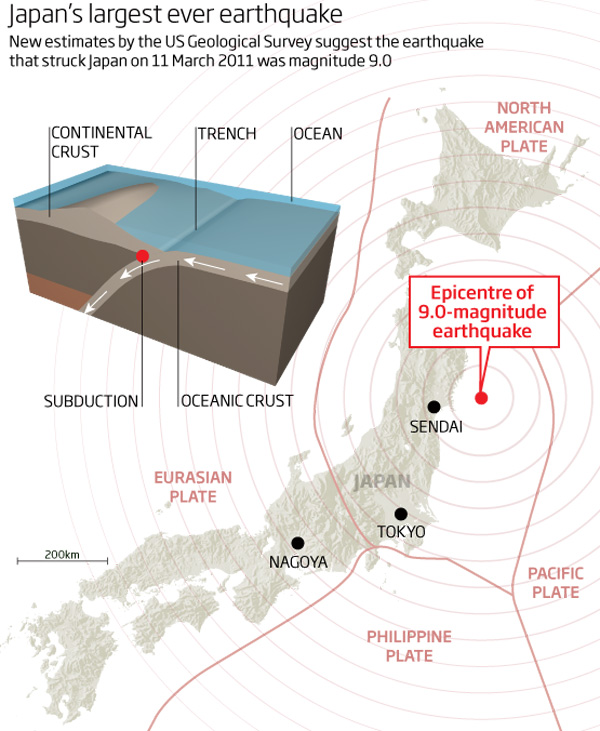
Via: http://www.newscientist.com/blogs/shortsharpscience/2011/03/powerful-japan-quake-sparks-ts.html
02.58 Looks like things might be starting to calm down a little. Aftershocks still continuing on a scale between 1-4, but gradually seem to be weakening.
http://typhoon.yahoo.co.jp/weather/jp/earthquake/
02.55 According to the National Police Agency, in 9 of the northern prefectures there have been 151 deaths, 547 missing and 798 injured. Casualties are being reported on a mass scale due to communities being caught in the huge tsunamis immediately following the earthquakes.
02.48 Ginza, Marunouchi, Namboku, Hanzomon line working; Hibiya, Tozai, Chiyoda, Yurakucho, Fukutoshin partially working; theyll all run all night (via @nobi)
02.46 12 hours since the initial quake.
02.37 US Air Force to bring cooling agents to stressed Fukushima nuclear reactor.
02.30 Emergency lines opened for foreign residents:
http://www.timeout.jp/en/tokyo/feature/2530/Japan-earthquake-live-report
02.17 48 dead in Fukushima, 370 missing
02.13 Defense Ministry says 1,800 households in Minamisoma city, Fukushima Prefecture is destroyed, JIJI Press reports (via @jt_kamiya)
02.13 Measures are being considered in order to release the pressure building up in the reactor core. Currently no radiation leakage, but there is still a possibility.
http://www.asahi.com/national/update/0312/TKY201103110824.html
02.10 Nuclear reactor in Fukushima still holding up with the temporary cooling measures. No radiation leakage yet, but water level rapidly diminishing.
01.57 NHK Twitter pages here and here. Follow for Japanese updates!
01.54 Over 300 dead. Over 500 missing. (via NHK)
01.50 People being advised not to turn their gas back on yet.
01.48 Report from Tokyo blogger Hikosaemon:
http://hikosaemon.blogspot.com/2011/03/march-11-2011-miyagi-earthquake-and-how.html
01.46 More updates from: http://jpeq311.posterous.com/info
“Place to stay tonight for FREE in Tokyo: Meiji Univ., Rikkyo Univ. Shinagawa Prince Hotel those who cannot going back home tonight in Tokyo.” via @ask9 If you plan to walk home and it will take a long time, consider it again – it can be better to stay at an evacuation center/a friend’s place for the night. Here’s a Google map of shelter (in Japanese). via @tcsuliv If you are around Shinjuku, Bunka Fashion College (文化服装学院) is offering food and shelter for the night. Map here. If you are in Tokyo and in need of recharger for your mobile phone, you can use a recharger for free at Bic Camera. If you are around Omiya Station in Saitama and can’t go home, Saitama Super Arena is now offered as an evacuation center. Map here. NHK Radio 2 broadcasts in English for the emergency info: Tokyo 693, Akita 774, Sendai 1089, Morioka 1386 (kHz AM)
01.25 Multi-lingual radio list:
http://h.hatena.com/herbe/243597512623822452
01.23 USGS showing 119 quakes across Japan:
http://earthquake.usgs.gov/earthquakes/recenteqsww/Maps/10/140_40.php
01.15 Narita airport expecting to re-open tomorrow morning (12th) for departures and arrivals.
http://www.yomiuri.co.jp/national/news/20110312-OYT1T00034.htm
01.12 KDDI undersea cable has been severed. Landlines and mobile phones networked to KDDI in Tohoku and the west of Kanto are without reception.
http://www.asahi.com/national/update/0312/TKY201103110803.html
01.10 ATTN: foreign citizens – Go to NHK Radio 963 to check the latest updates. Available: ENG, CHI, KO, SP, POR, GER, FR (via @shioyama)
01.09 Another live streaming NHK channel added:
http://www.ustream.tv/channel/nhk-gtv2
01.04 Official death toll now at 300 – conservative figures, and sure to rise. Kyodo reporting 88,000 people missing (via @AkikoFujita)
01.02 NHK collecting information from local broadcasting agencies:
http://www.nhk.or.jp/saigai/jishin/
00.58 Incredible video of Tokyo towers swaying:
http://www.youtube.com/watch?v=JhJzdtzl6KY
00.56 @gakuranman Twitter account back for now. Follow @gakuu in case it goes down again.
00.55 13,000 stuck at Narita airport (via @tokyotwilighter)
00.52 Aftershocks still continuing (level 2, Chiba):
http://typhoon.yahoo.co.jp/weather/jp/earthquake/
00.47 Dam breaks in Fukushima Pref., washes away homes (Kyodo) (via @japantimes)
00.44 Quake said to be 178 times bigger than the Great Hanshin Earthquake of 1995. (via Nikkei)
00.43 Twitter has killed my main account @gakuranman for too many tweets. Please follow @gakuu for updates.
00.33 93 dead, 351 missing according to police
00.28 Photos from the quake, Daily Mail:
00.17 Current Twitter trends:

00.15 Estimated people only had 10-15 minutes between the time the quake hit and the first tsunamis as the epicentre was so close (via Twitter)
00.13 8000 members to be dispatched from the Japan Self Defense Force to deal with the crisis:
http://www.yomiuri.co.jp/national/news/20110311-OYT1T01003.htm
00.11 China’s CCTV reports Japan quake swayed buildings in Shanghai (via @martyn_williams)
00.10 Fukushima reactor cooling system to come back on @ 1.30am. No leak: RT @asahi_fukushima 福島第1原発2号機の冷却系は午前1時半に復旧する見通し! 福島県対策本部の情報です。今のところ放射能漏れはない (via @shioyama)
00.07 30 people dead, over 300 missing in Fukushima prefecture.
00.02 Aftershocks continue. Magnitude 4 in Ibaraki prefecture.
http://typhoon.yahoo.co.jp/weather/jp/earthquake/
March 12th, 2011
23.58 Aftershocks still occurring in Tokyo. Water outages in many locations, Electricity gradually being restored.
23.57 New Scientist article on how the earthquakes will create more tsunamis to come.
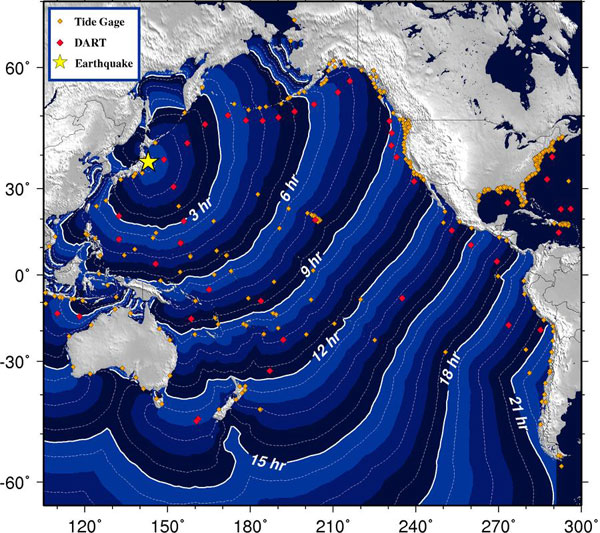
http://www.newscientist.com/blogs/shortsharpscience/2011/03/powerful-japan-quake-sparks-ts.html
23.53 Two videos from Fukushima (via @howtojapanese)
http://www.yesicanusechopsticks.com/earthquake/IMG_0187.MOV
http://www.yesicanusechopsticks.com/earthquake/IMG_0188.MOV
23.49 Dial 050-5814-7230 for 24-hour free interpreting service for quake affected people (En, Zh, Kr to Jp). Spanish, Portuguese from 0800 to 2100 (via @durf)
23.48 Photos of the earthquake in Japan
http://www.theatlantic.com/infocus/2011/03/earthquake-in-japan/100022/
23.44 USGS has measured 67 aftershocks scale 5 or greater since the main quake:
http://earthquake.usgs.gov/earthquakes/recenteqsww/Quakes/quakes_all.php
23.39 Reports the Fukushima nuclear power plant has cooled (via @howtojapanese)
23.38 Reports a tsunami is covering Hokkaido, Northern Japan (via @shioyama)
23.33 Video showing the moment of the quake in Sendai
http://www.youtube.com/watch?v=j3fUqdGXLbM
23.28 The fires in Kesennuma covering 2.5×4.5km (via @durf):
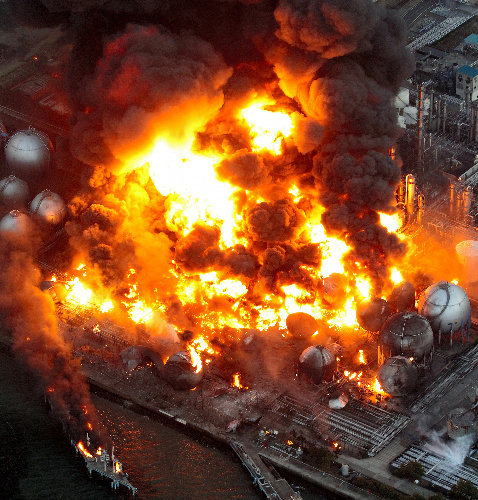
Via: http://www.asahi.com/special/10005/TKY201103110595.html
23.24 Footage of Kesennuma – a town on fire:
http://live.nicovideo.jp/watch/lv43018790
23.19 East Japan Railways has reported that they’ve completely lost contact with one of their 4-carriage trains.
23.14 Fukushima nuclear reactor update: Battery cooling the reactor has stopped. Backup not arrived yet. Risk of breaking down and radiation leaks. (via Japanese tv)
23.11 Footage of burning oil refinery
http://www.youtube.com/watch?v=TZqhc-ysHzM
23.10 Nagoya International Women’s Marathon may be cancelled. Make no mistake, this earthquake is going to affect the whole country.
23.02 More quakes being reported from Tokyo by my friends.
22.52 Aftershocks still continuing (level 4s – original quake was 7 on the Japanese scale):
http://typhoon.yahoo.co.jp/weather/jp/earthquake/
22.46 Tokyo Sky Tree fine. Tip of Tokyo Tower bent. It broadcasts NHK and other signals, so no reception in some areas.
22.43 All bicycles are sold out in some bike shop. no wonder. (via @satoshi213)
22.38 Location of the Fukushima nuclear power plant map (scaled out, Japan) (closeup) (via @earthoutreach)
22.35Video from Ofunato. 48 people swept away there, including 23 middle-school students.
http://www.youtube.com/watch?v=HGrNDYPidWU
22.34 Police reporting 200-300 bodies discovered in the Arahama area of Wakabayashi Ward, Sendai (TBS News) (via @gen)
22.32Kyodo just said 200-300 bodies were found on the beach of Sendai City, Miyagi Prefecture … (via @jt_nakata)
22.27 Tsunami footage from Sendai airport.
http://www.youtube.com/watch?v=l12lIDKYsYo
22.23 All Tohoku lines and Eastern JR lines closed until safety can be assessed.
22.21 All public high schools in Tokyo now open for people who can’t get home (via @tamegoeswild)
22.20 Risk of radiation exposure in Fukushima. Nothing confirmed, but people still being advised to evacuate.
22.19 Another aftershock in Tokyo.
22.16 People in Chili, Easter Island and Equator being advised to evacuate amid tsunami warnings.
22.05 Expressways in northern Japan (Tohoku) closed due to damage.
22.05 Waves of up to 2m are being predicted for many places all over *southern* Japan. People near the coast being advised to get to high ground.
21.55 NHK t.v reporting on the nuclear sit in Fukushima – no leakage yet. They are asking people with 3km to evacuate. People 3km-10km should be on alert for instructions.
21.54 Quake of 4 in Nagoya. Tsunami warning issued, evacuation advised.
http://www.nic-nagoya.or.jp/en/e/archives/3072
21.45 NHK *finally* starts a live stream on Ustream. About time.
http://www.ustream.tv/channel/nhk-gtv
21.42 Another big tsunami warning along the coast of Japan, Hokkaido, Aomori, Chiba (etc.)
21.41 Narita re-opens airport for departures.
21.39 Supermarket getting hit by the quake: http://www.youtube.com/watch?v=x9QNzGY0qxw&feature=youtu.be
21.37 Tokyo electric struggling to meet demand – thus request for people to try to cut down on use – heaters off! (via@tokyotwilight)
21.27 Residents to be evacuated within 2km of the nuclear reactor amount to about 1864 people.
http://www.asahi.com/national/update/0311/TKY201103110661.html
21.27 “Residents within 2km of Fukushima Nuclear Power Plant are requested to evacuate, due to low cooling water level NHK Radio” (via @good_people)
21.23 Nuclear emergency has already been declared. The battery cooling the system will run out by about 10pm, then there is a risk of the reactor breaking down and radioactive material leading. Okuma town and Futaba town residents to be evacuated.
21.20 NHK Radio 2 broadcasts in English for the emergency info: Tokyo 693, Akita 774, Sendai 1089, Morioka 1386 (kHz AM) (via @kenji_rikitake)
21.20 Fukushima losing the battle to cool the nuclear reactor. If they can’t cool it, there is risk of radioactive leakage.
http://www.asahi.com/national/update/0311/TKY201103110615.html
21.18 Fukushima nuclear power plant struggling to cool reactor. Local evacuation ordered – Nikkei (via @dicklp)
21.10 Ship carrying 100 washed away by tsunami: Miyagi police (Kyodo) (via @japantimes)
21.03 NHK radio AM963 apparently broadcasting earthquake related info in English, French, German, Spanish, Portuguese, Chinese, Korean (via @fukumimi)
21.02 Reading that Ginza and Hanzomon lines in Tokyo are up and running now. Marunouchi & Nanboku too. Only those 4 metros yet (via @tokyoreporter)
20.55 Tokyo Metro Ginza Line running between Shibuya and Asakusa (via NHK News). Hanazomon line also running. (via @shioyama)
20.51 61 Dead. 244 Missing.
20.39 46 Dead. 51 Missing. 90 Injured.
20.38 Another big shake in Iwate city.
20.35 Water outage confirmed in Saitama (via @hillpoems).
20.30 UK Prime Minister announces the British government is making efforts to get help out to Japan.
20.28 Another small quake recorded in Sendai. Gradually getting weaker
http://typhoon.yahoo.co.jp/weather/jp/earthquake/
20.28 Shelter list
With public transport entirely disrupted across the city (JR has announced there will be no more services this evening), the following public spaces have been made available to stranded Tokyoites:
In Tokyo:
Aoyama Oath, Shibuya; Dommune club (50 people max); Eiji Press (Ebisu) is offering toilet, telephone, internet; Yotsuya Sophia University; Hiroo University of the Sacred Heart; Roppongi Butagumi Shabu Ann (the owner is handing out curry and onigiri for free); Sasazuka Bowl; Seikei University (Kichijoji & Mitaka area); Waseda University (Building 8, Waseda Campus, Takadanobaba) Shinjuku Bunka Fukuso Gakuin; Ueno Tokyo Bunka Kaikan; Takashimaya Times Square Shinjuku; Tsukiji Honganji; Shinbashi Daiichi Hotel lobby; Ikebukuro Rikkyo University; Shinagawa Prince Hotel lobby; Shibuya & Omotesando Aoyama Gakuin University gymnasium
In Yokohama: Fifth floor of Landmark Plaza building
In Saitama: Saitama Super Arena
Via: http://www.timeout.jp/en/tokyo/feature/2530/Japan-earthquake-live-report
20.26 Ongoing fire at an industrial complex:
http://www.news24.jp/articles/2011/03/11/07177796.html
20.09 No radiation leakage has been confirmed (via Japanese tv). Though coolant reactor may have been damaged (via @pinktentacle).
20.06 People trapped on the Shinkansen in a tunnel in Fukushima prefecture. Currently unable to be led out safely.
19.59 41 deaths and 90 injuries confirmed as of now. Many people missing.
19.50 JAL and ANA cancel all flights from Narita airport (voa @japantimes)
19.49 Photos of the evacuations in Tokyo from Shibuya246:
http://shibuya246.com/2011/03/11/earthquake-evacuations-tokyo/
19.45 Industrial complex in Chiba still blazing.
19.43 Convenience stores running out of food as people prepare to spend night in Tokyo.

Via: http://josephtame.posterous.com/nothing-but-empty-shelves-as-people-prepare-t
19.38 Another quake recorded in Fukushima, scale 4.
19.30 Trains in Ibaraki are free. Expected to expand to the larger Kanto area.
19.27 Working to resolve the situation in Fukushima. Still possibility of radiation leakage, but as of yet nothing has been confirmed.
19.22 Google Tsunami update:
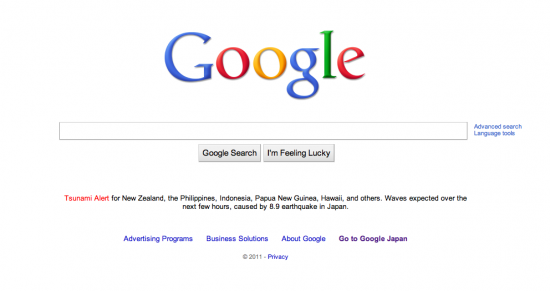
19.18 Bic camera apparently letting people recharge phones (via @jcayzac)
19.16 Aftershocks still continuing. Currently around 50 recorded: http://typhoon.yahoo.co.jp/weather/jp/earthquake/
19.12 Update on free drinks for Suntory vending machines
Suntory vending machines have emergency levers beneath a sticker on the upper-right corners. Pull the sticker off, pull the lever firmly and you’ll get free drinks.
Elsewhere, Bic Camera is offering a free phone charging service at all their stores.
Via: http://www.timeout.jp/en/tokyo/feature/2530/Japan-earthquake-live-report
19.10 Tsunami whirlpool in Ibaraki:
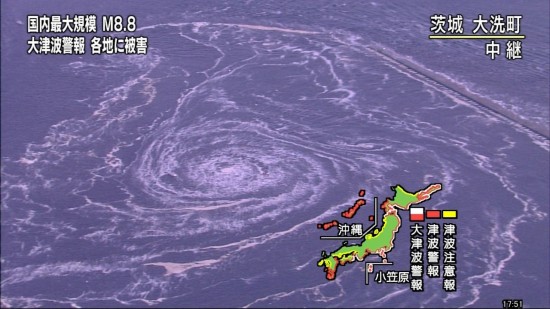
Via http://i.imgur.com/hbyaG.jpg
19.07 Safety advice collected via Twitter:
With the 1995 Kobe earthquake, the biggest after shock occurred 3 hours after the initial quake. Prepare for those after shocks even if it appears safe now. Get some water ready and handy. Stock up some water in your bath tub or some other containers. Get some emergency food ready. Plug off unncessary outlets. Shut down gas and electricity, especially when you leave your house to evacuate or when the power is out. A fire is most likely to occur when electricity comes back. Tokyo Electricity Power Company is asking to save electricity. Keep windows open. If you live near the ocean or a river, be aware of tsunami. Here’s info on tsunami. Don’t make phone calls unless absolutely necessary in order to ensure that those in need of making emergency calls can use the lines.
Using Skype, Twitter, Facebook, and e-mail is fine.“Dial 171, leave a message with your home number. Anyone who knows ur home number can check your safety.” (via @beerintokyo) Google Person Finder for this earthquake is available here. Get warm clothes. Be ready for potential poweroutage if it hasn’t happened to your area yet. Check where the closest evacuation center from where you are. Parks, schools, and other public places are often used as an evacuation center. If you live in Tokyo, here’s a list of evacuation centers. It’s in Japanese, though. If you are a woman, be careful for potential rapists who take advantage of this emergency situation and be with some other people. Don’t be alone.
Via: http://jpeq311.posterous.com/info
18.58 Power outages continuing in Tohoku and most of kanto (Tokyo area). NOTE: People are advised to turn off appliances and power to their houses before evacuating – when the power returns it could cause a fire.
18.52 Govt declares state of emergency regarding possible radiation leak at Fukushima nuclear power plant (via @pinktentacle)
http://sankei.jp.msn.com/affairs/news/110311/dst11031118270134-n1.htm
18.47 500m+ bus lines forming in central Tokyo
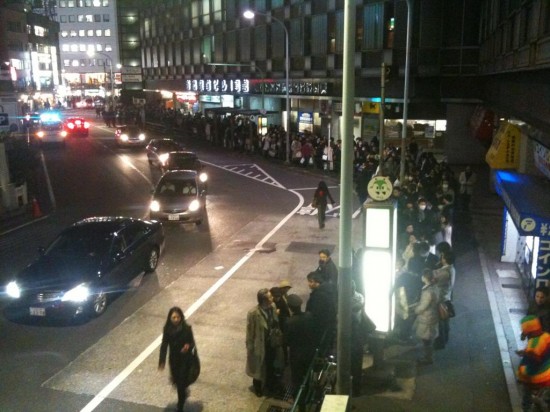
Via: http://yfrog.com/gynwfpwj
18.47 JR East have decided to halt all trains until tomorrow (via @akikohayashi)
18.46 Quake reported to be 160 more powerful than the one to hit Christchurch last month (via @tamegoeswild)
18.38 All Suntory vending machines reportedly free after the earthquake – just hit the button (via @dannychoo)
18.31 Following areas have been opened to the public for those who cannot get home tonight:
While there have been no major casualties in Tokyo, thousands are stranded tonight as taxis and hotels find themselves oversubscribed. The following public spaces have been opened to people unable to get home.
Tukiji Honganji, Shinbashi Daiichi Hotel lobby, Ikebukuro Rikkyo University, Shinagawa Prince Hotel lobby, Shibuya & Omotesando Aoyama Gakuin University gymnasium.
Via: http://www.timeout.jp/en/tokyo/feature/2530/Japan-earthquake-live-report
18.17 Tsunami updates and report from Mutantfrog.
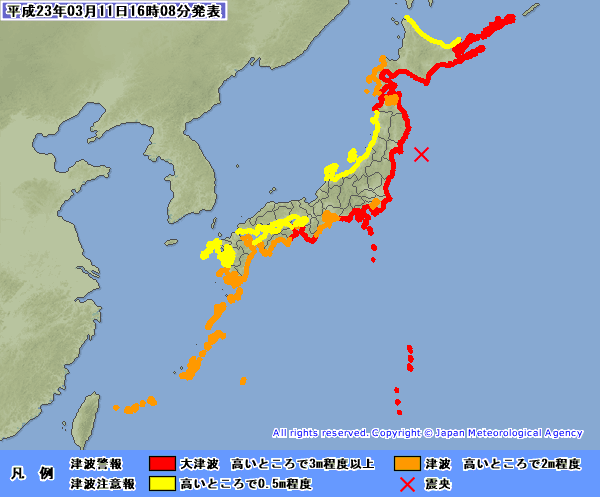
Regions with LARGE tsunami risk (red) are as follows:
Iwate, Miyagi, Fukuoka, Hokkaido Pacific coast central area, Aomori Pacific coast, Ibaraki, Chiba Kujukuri outskirts, Izu islands, Hokkaido Pacific East Coast, Hokkaido Pacific West Coast, Aomori Sea of Japan coast, Chiba interior, Ogasawara Islands, Sagami Bay and Miura Peninsula, Shizuoka, Wakayama, Tokushima
Regions with REGULAR tsunami risk (orange) are as follows:
Aichi outer sea, Mie southern area, Kochi, Miyazaki, Tanegashima/Yakushima region, Amami/Tokara islands, Hokkaido Sea of Japan southern coast, Mutsu Bay, Tokyo Bay inner bay, Ise, Mika Bay, Awaji southern region, Ehime Uwakai coast, Oita Seto Inland Sea coast, Oita Bungo Channel, Kagoshima East and West regions, Okinawa main island, Daito Islands, Miyakojima, Yaeyama Islands.
Regions with LOW level alert (yellow) are as follows:
Sea of Okhostsk, Osaka, Hyogo Seto Inland Sea coast, Okayama, Kagawa, Ehime Seto Inland Sea coast, Ariake/Yatsushiro Sea, Nagasaki western region, Kumamoto Amakusanada coast, Akita, Yamagata, Niigata Kaminaka and Kaetsuchi, Sado region, Toyama, Ishikawa Noto region, Hiroshima, Yamaguchi Seto Inland Sea coast.
Other regions do NOT have a tsunami warning or watch at this time.
[Update at 5:20]
I just heard that the Philippines raised their tsunami alert level to the highest in many years, NE coast, which faces Japan, will be hit in around 2 hours.
Via: http://www.mutantfrog.com/2011/03/11/tokyo-earthquake/
18.02 Many people stranded in Tokyo as trains are brought to a standstill (Ikebukuro)
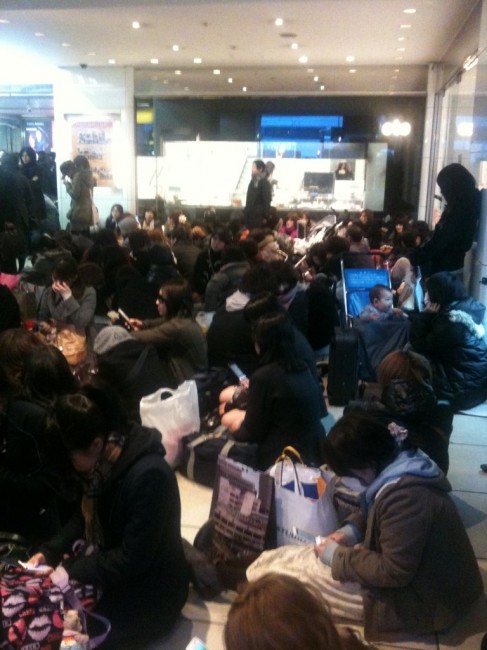
Source: http://twitgoo.com/20ppgg
18.01 Certain ATM machines in affected areas reporting not working.
18.00 Devastating footage of the tsunami from CNN: http://edition.cnn.com/2011/WORLD/asiapcf/03/11/japan.quake/index.html?hpt=T1
17.56 Huge damage to 福島学院大学
17.51 More tsunami warnings issued in Fukushima.
Payphones have become free for people in northern areas.
Currently there is no power in many of the northern cities including Akita, Iwate and Sendai. People in Kanagawa prefecture have also reported loss of power.
Chiba Steelworks has exploded:
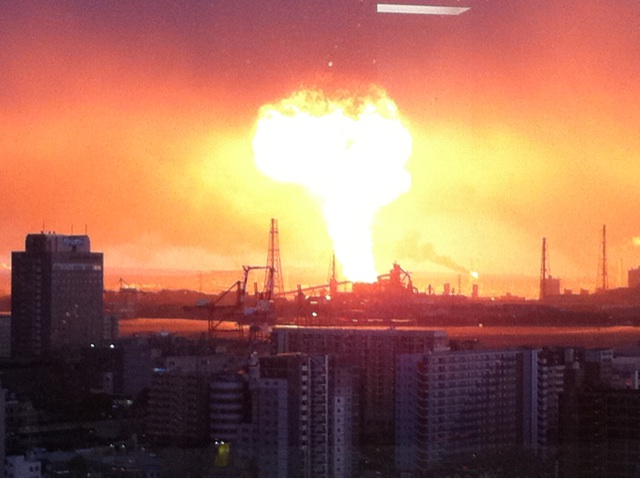
Source: http://twitpic.com/48edb1
Oil Refinery:
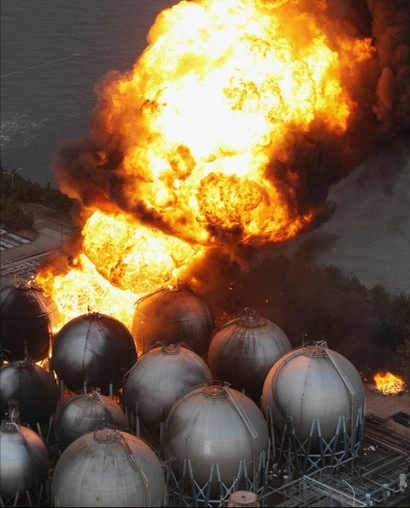
Via: http://www.bbc.co.uk/news/world-asia-pacific-12709791
The roof of a school building in Tochigi has collapsed at a school graduation ceremony.
Shinakansen heading towards Tohoku have been stopped.
Tip of Tokyo Tower bent:
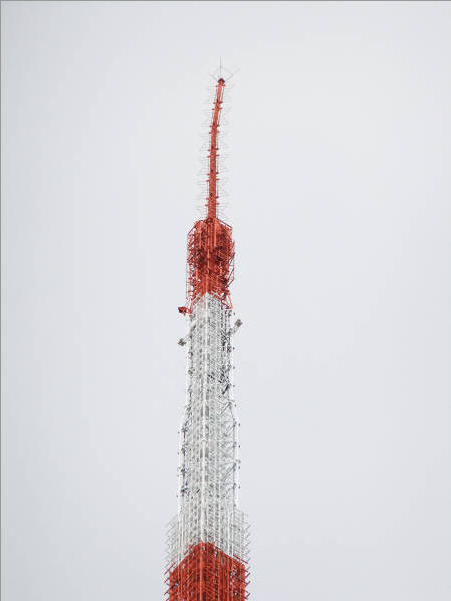
Via: http://www.jiji.com/jc/d4?d=d4_topics&p=eqa200-jlp10575297
Split in the earth:
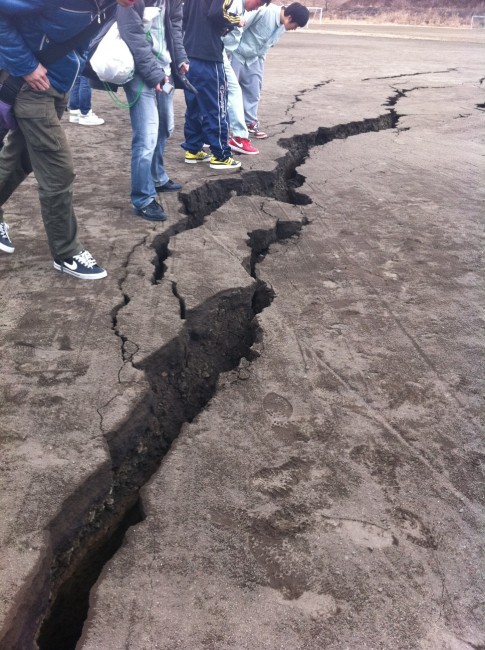
Via: http://twitpic.com/48dazv
Tsunami damage:
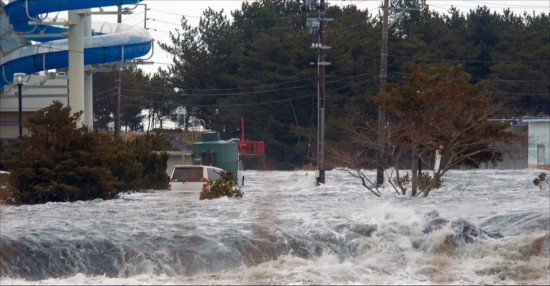
Via: http://www.bbc.co.uk/news/world-asia-pacific-12709791

Via: http://twitpic.com/48f2fj
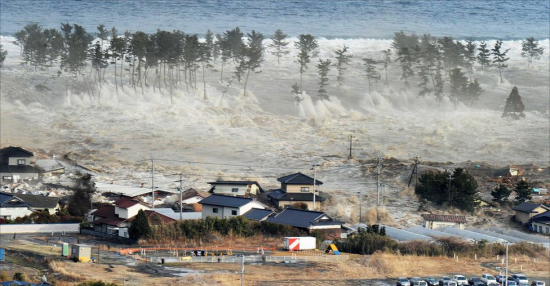
Via: http://www.bbc.co.uk/news/world-asia-pacific-12709791
Fire in Odaiba Telecoms building:
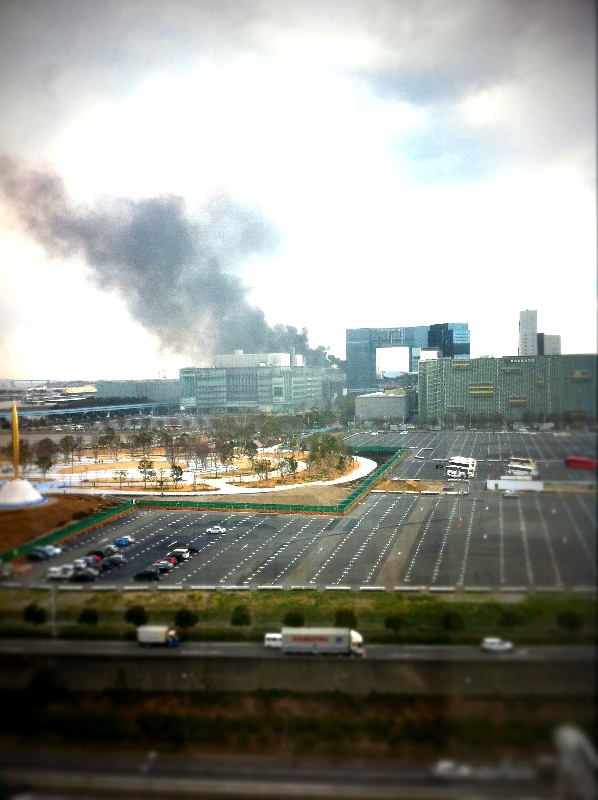
Source: http://twitpic.com/48d90w
Landslides occurring in various places, including one involving a truck and car in Shibata-machi. Death recorded.
Initial earthquake:
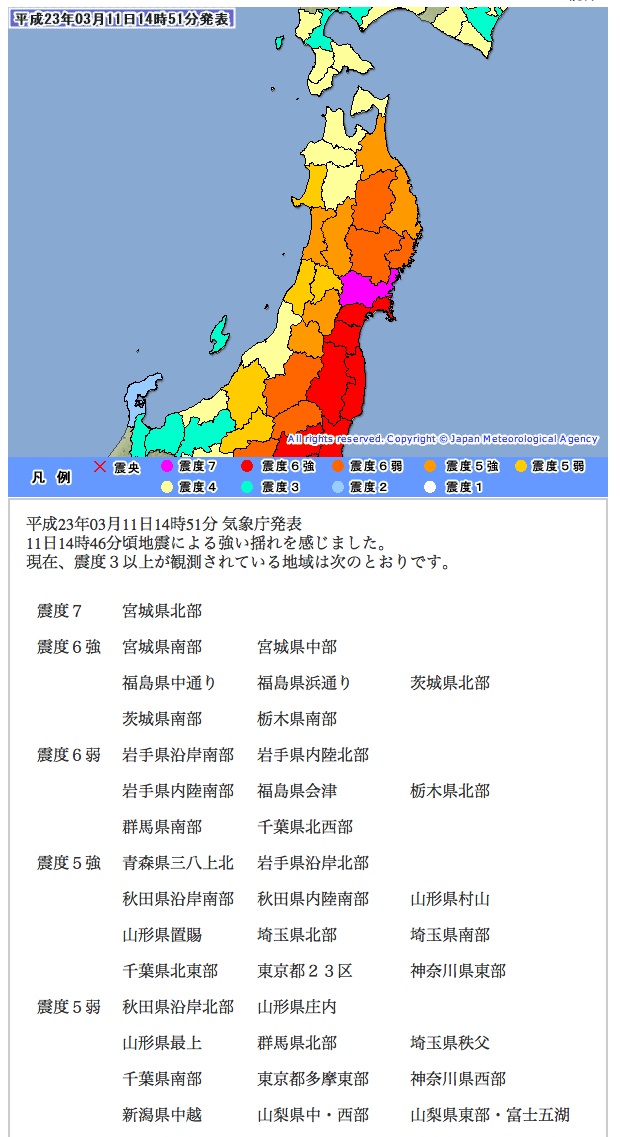
March 11th, 2011









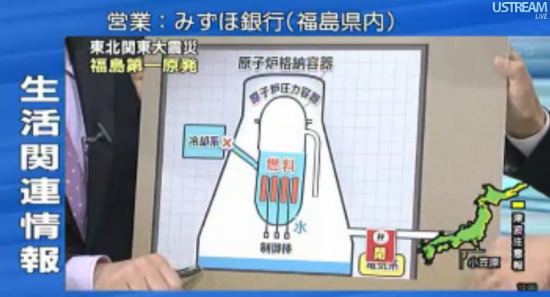
There is so much information in this post and the following ones about the disaster in japan that a sociologist could have a field day gathering infromation about how Twitter became a portal of non biazed news information. I apriciate the ammount of time you put into this and as a sociologist myself I hope that either I myself or someone else out there will some day soon, when it all starts calming down a bit, will use all this information from your site, and from the other bloggers that made it a mission to put together all the facts for the world to see what Truly was and is still happening in japan. I have yet to travel to japan, the land of my dreams, and yet even I am stunned from the leaks of pictures and information that I get my eyes on, about Japanese people and there reactions to this disaster. I can only say that it is amazing to see the change in ( not sure if I should use this word) the every day mentality. The silence going over to pure determination to help your neighbur and even strangers, since they all are the same people.
I have always been emotional, tears well up instantly only thinking of how it has affected japan and its people. Not only the disaster itself and the HUGE loss of lifes and pain inflicted on teh survivers, but allso the enourmus amount of caring, love and determination that the Japanese people have shown these days after the Disaster. It is like watching a people ashamed of its own nation since second world war finally waking up and standing tall and proud for there nation, just as they should!